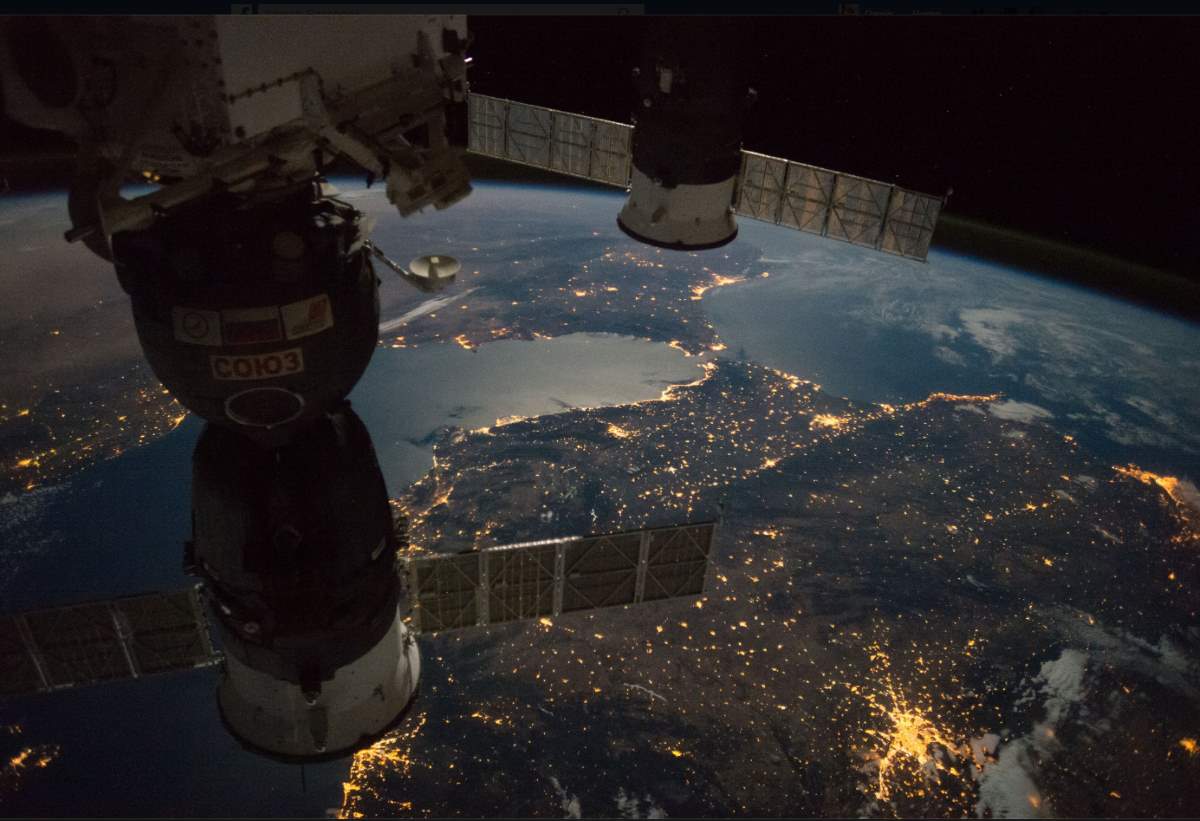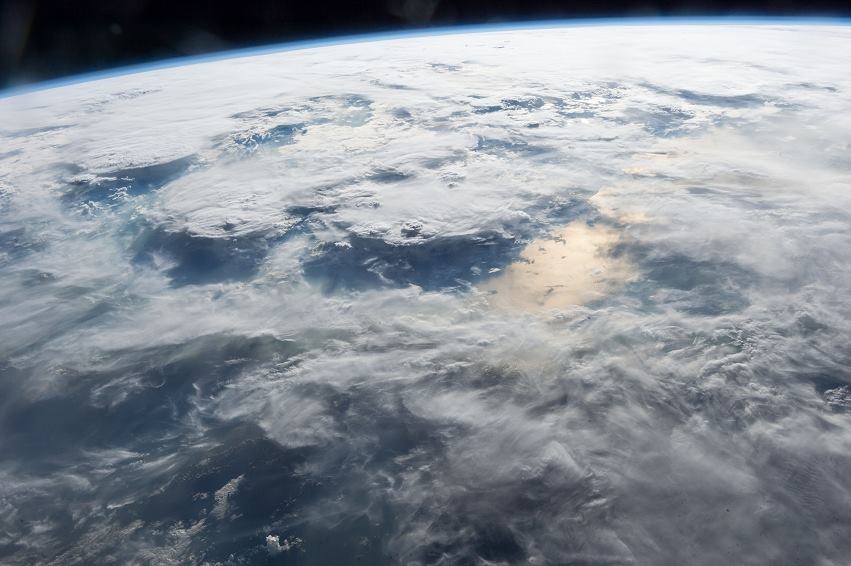It looks like you're using an Ad Blocker.
Please white-list or disable AboveTopSecret.com in your ad-blocking tool.
Thank you.
Some features of ATS will be disabled while you continue to use an ad-blocker.
14
share:
Flat Earthers look away now.
The video was made as part of the Space Station's 20th anniversary celebrations , how peaceful it looks from up there.
The video was made as part of the Space Station's 20th anniversary celebrations , how peaceful it looks from up there.
In just under 15 minutes, this clip takes you from Tunisia across Beijing and through Australia in two trips around the world. You can follow the Station’s location using the map at the top right-hand-side of the screen alongside annotations on the photos themselves. This timelapse comprises approximately 21 375 images of Earth all captured by Alexander from the International Space Station and shown 12.5 times faster than actual speed.
This was taken from the ISS? Isn’t it supposed to be at a much lower altitude than this video?
And no, I’m not a flat earther. Flat earth hypothesis is ludicrous.
And no, I’m not a flat earther. Flat earth hypothesis is ludicrous.
what's with the gap at 1:34?
Do they not have any buffering?
The digital overlay (text on countries) plus that fish-eye lens actually makes it look pretty fake, IMO.
PS what's with all the bright flashes in the Philippines?
Do they not have any buffering?
The digital overlay (text on countries) plus that fish-eye lens actually makes it look pretty fake, IMO.
PS what's with all the bright flashes in the Philippines?
edit on 9-12-2018 by lordcomac because: (no reason given)
a reply to: EmmanuelGoldstein
The weather isn't moving because you aren't looking at it for long enough.
The weather isn't moving because you aren't looking at it for long enough.
originally posted by: KKLOCO
This was taken from the ISS? Isn’t it supposed to be at a much lower altitude than this video?
And no, I’m not a flat earther. Flat earth hypothesis is ludicrous.
Fisheye lens exaggerates the actual amount of curve. You can see it's a fisheye by the solar panels that look curved, but they are actually straight.
Here's what the curvature looks like from the ISS in a photo using a lens with little noticeable distortion:

For size reference that blob of land in the lower right is the southern part of the Iberian Peninsula (Spain and Portugal) The center of this image is of the Strait or Gibraltar opening into the Mediterranean Sea.
edit on 12/9/2018 by Soylent Green Is People because: (no reason given)
We should make a go fund me for NASA. Maybe next time they could film the whole thing not using GoPro. How about using a camera that DOES NOT
exagerate the curvature of Earth. How about using a normal camera from the beginning. It would also be nice for all the astronauts to gather up and
finally decide if they saw stars in space or if it was pitch black. What about a live feed from a rocket that would allow us to see LIVE how the
transition looks when they pass from gravity to 0 gravity.
originally posted by: leopayaso1987
We should make a go fund me for NASA. Maybe next time they could film the whole thing not using GoPro. How about using a camera that DOES NOT exagerate the curvature of Earth. How about using a normal camera from the beginning.
They do use "normal cameras" on the ISS. They use Nikon DSLRs with a range of different lens. The images are pretty stunning.


Latest ISS Imagery
What about a live feed from a rocket that would allow us to see LIVE how the transition looks when they pass from gravity to 0 gravity.
Already been done with Shuttle and Soyuz flights.
www.youtube.com...
a reply to: leopayaso1987
Wouldn't they still be under significant acceleration during that transition?
Falcon heavy launches are capable of something like 18 G's. I don't think humans can survive that, though.
Wouldn't they still be under significant acceleration during that transition?
Falcon heavy launches are capable of something like 18 G's. I don't think humans can survive that, though.
originally posted by: leopayaso1987
What about a live feed from a rocket that would allow us to see LIVE how the transition looks when they pass from gravity to 0 gravity.
You don't "pass from gravity to 0 gravity" at some magic point above Earth when heading to orbit.
Zero gravity occurs when you are in free-fall, and that usually occurs when the main engines of the rocket that launched you cuts off, and there is no longer an accelerating force pushing you into your seat. When a rocket that is about to achieve orbit cuts its engines, or when the ISS is orbiting, Earth's gravity is just about as strong as it is on the surface and still pulling you down, but that pull results in a free-fall that mimics the lack of gravity.
The place that the ISS is in orbit is NOT past some special point above the Earth that has no gravitational force acting on the ISS and the people inside it, but rather they are in free-fall caused by the Earth's gravity pulling the ISS crew and the space station around them back down. The difference for orbit as opposed to being pulled straight back to the surface (perpendicular to the surface) is that a craft in orbit also has a sideways motion that is parallel to the surface.
So when you are in an orbit, as you fall you also move sideways. And that sideways motion is fast enough that before you hit the surface the surface has "curved out of your way" under itself, allowing you to perpetually "miss" hitting that surface -- achieving an orbit.
But the Earth's gravity is still there on the ISS or a rocket achieving a low orbit, with a force just about as strong as it is for you sitting in your home.
edit on 12/10/2018 by Soylent Green Is People because: (no reason given)
new topics
-
A Warning to America: 25 Ways the US is Being Destroyed
New World Order: 33 minutes ago -
America's Greatest Ally
General Chit Chat: 1 hours ago -
President BIDEN's FBI Raided Donald Trump's Florida Home for OBAMA-NORTH KOREA Documents.
Political Conspiracies: 6 hours ago -
Maestro Benedetto
Literature: 7 hours ago -
Is AI Better Than the Hollywood Elite?
Movies: 8 hours ago -
Las Vegas UFO Spotting Teen Traumatized by Demon Creature in Backyard
Aliens and UFOs: 11 hours ago
top topics
-
President BIDEN's FBI Raided Donald Trump's Florida Home for OBAMA-NORTH KOREA Documents.
Political Conspiracies: 6 hours ago, 27 flags -
Krystalnacht on today's most elite Universities?
Social Issues and Civil Unrest: 17 hours ago, 9 flags -
Supreme Court Oral Arguments 4.25.2024 - Are PRESIDENTS IMMUNE From Later Being Prosecuted.
Above Politics: 17 hours ago, 8 flags -
Weinstein's conviction overturned
Mainstream News: 16 hours ago, 8 flags -
Gaza Terrorists Attack US Humanitarian Pier During Construction
Middle East Issues: 12 hours ago, 8 flags -
Massachusetts Drag Queen Leads Young Kids in Free Palestine Chant
Social Issues and Civil Unrest: 14 hours ago, 7 flags -
Las Vegas UFO Spotting Teen Traumatized by Demon Creature in Backyard
Aliens and UFOs: 11 hours ago, 6 flags -
Meadows, Giuliani Among 11 Indicted in Arizona in Latest 2020 Election Subversion Case
Mainstream News: 14 hours ago, 5 flags -
2024 Pigeon Forge Rod Run - On the Strip (Video made for you)
Automotive Discussion: 12 hours ago, 4 flags -
Is AI Better Than the Hollywood Elite?
Movies: 8 hours ago, 3 flags
active topics
-
Is AI Better Than the Hollywood Elite?
Movies • 17 • : ThePsycheaux -
The best Rice dish i've ever tasted... Kimchi Rice
Food and Cooking • 26 • : lamhaocc -
A Warning to America: 25 Ways the US is Being Destroyed
New World Order • 1 • : 727Sky -
Massachusetts Drag Queen Leads Young Kids in Free Palestine Chant
Social Issues and Civil Unrest • 15 • : tarantulabite1 -
America's Greatest Ally
General Chit Chat • 1 • : BingoMcGoof -
How ageing is" immune deficiency"
Medical Issues & Conspiracies • 35 • : annonentity -
HORRIBLE !! Russian Soldier Drinking Own Urine To Survive In Battle
World War Three • 49 • : Freeborn -
Gaza Terrorists Attack US Humanitarian Pier During Construction
Middle East Issues • 30 • : Asher47 -
Electrical tricks for saving money
Education and Media • 8 • : anned1 -
Hate makes for strange bedfellows
US Political Madness • 48 • : Terpene
14

